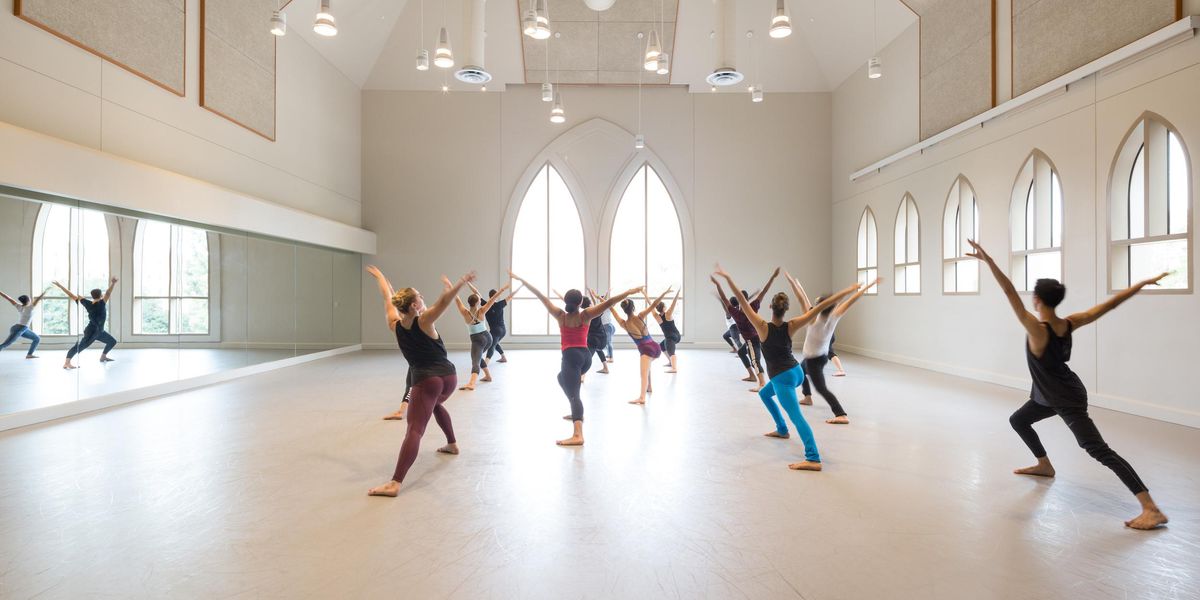Teacher's Wisdom: Zvi Gotheiner
Zvi Gotheiner began studying dance in his native Israel and came to New York in 1978. He has performed with the Batsheva Dance Company, the Joyce Trisler Danscompany, and Feld Ballets/NY. In 1989 he founded ZviDance, which has performed his choreography at The Joyce, Jacob’s Pillow, and the American Dance Festival. Presently he teaches ballet independently at a studio in City Center, where he spoke to Rachel Straus about his approach.
In your class there are New York City Ballet dancers, modern dancers from professional companies, and beginners. How do you account for the range of abilities in your class?
I love it. Why not? It sends the message that here you can learn, that you don’t need to pretend like you know everything, that you shouldn’t be scared of failing. If you are ready to confront physical elements within yourself that need modifying, then this is a place to be. In my class you are not going to be ridiculed. I think that when dancers are offered a supportive environment they are able to access more of their creative potential.
What blocks dancers from fulfilling their potential?
A negative mind! Thoughts and feelings like not being good enough, lazy, weak, ugly, or unsuitable for the field. These attitudes bring you to a wall because of the connection between negativity in the mind and tension in the body. Without an understanding of this connection, any attempt to help a dancer attain better placement and efficiency of movement proves to be very difficult. Tension is an unnecessary power in the body that contorts it, therefore alignment is improved by letting tension go. A change requires a release not just of the musculature around the skeleton, but also a change in perceptions and attitude created in the mind.
Who influenced your teaching?
I studied with Maggie Black for 11 years. She helped me understand that alignment is not just for the sake of aesthetic value, that alignment doesn’t revolve around an idea of looking like royalty or the need to appear to be on top of something. Finding individual alignment is a way in which movement can become more organized and consequently easier to execute.
How is your class structured?
I try to make the class that I would like to take myself. There is a kind of formula for the barre. It’s about quantities. You need enough of this, not too much of that to get the body deeply warmed up. At the barre almost every exercise is repeated twice. I learned that from Maggie. The first time you struggle with the exercise, you’re still catching up with what it is. The second time, you can ease into the movement and express yourself without struggling. Then it becomes like a song.
Class includes a slow exercise that gives each dancer enough time to meditate to experience their existence. It also includes exercises that are technically challenging—but are not impossible. Movement logic needs to be part of each exercise. It works well when the exercise is fun and when it is also musical to a point that it is just great to do. What I love to see is when a dancer comes to realize the inherent intelligence in his or her body. It’s far more satisfying than seeing someone who can execute eight pirouettes.
Why do you think that good alignment is often equated with muscular strength?
There is a general perception of the body as weak and unintelligent. There is a distrust of the body as it is. I think the body is magnificent. With students I research the idea that they are using too much power in their support system and subsequently blocking their movement. Why they do that? I wish I had a simple answer. You might look at the imagery that is being used in ballet and contemporary dance training. You also might look at today’s cultural attitudes and beliefs. By cultural, I mean a perception of the body that is embedded in advertising. For example, the idea that being fit means a certain kind of musculature. Having lots of muscles today is considered sexy. But having lots of muscles does not necessarily translate to being centered, and it will not necessarily make you a great mover.
What other issues affect placement?
Your placement is the physical manifestation of the way you see yourself. The more emotional trauma you accumulate in the body, the greater sense of physical protection with which you try to surround yourself. Your placement will also be affected by any imagery that is unrealistic or unsynchronized with the way the body functions.
You once said that ballet is misery. Please explain.
If you interview those in the ballet field today, 97 percent will eventually confess that ballet is misery. It doesn’t make sense to me. Something that can bring such joy, like dancing, also comes with so much pain. Whether you talk to people who take ballet as hobby, modern dancers, or ballet dancers in companies, the conversation is the same. We have a history of using negative reinforcement in training dancers. If there is one thing that I would like to teach more than anything else, it is that taking pleasure in moving can make you a better dancer.
What do you think ballet offers beyond the obvious—learning a classical technique?
For me, ballet is a source of meditation. You can learn who you are by working with your body. The idea of finding symmetry—ballet is just great for that. It’s so simple: front, side, back with one leg extended and the other supporting the body. At the same time, because of ballet’s straightforwardness, you are very exposed. This simplicity creates a greater potential for humiliation. Ballet brings all the divisions of the self together. Grace can be the result. In ballet you are constantly in a process of becoming excellent, however you define it.




